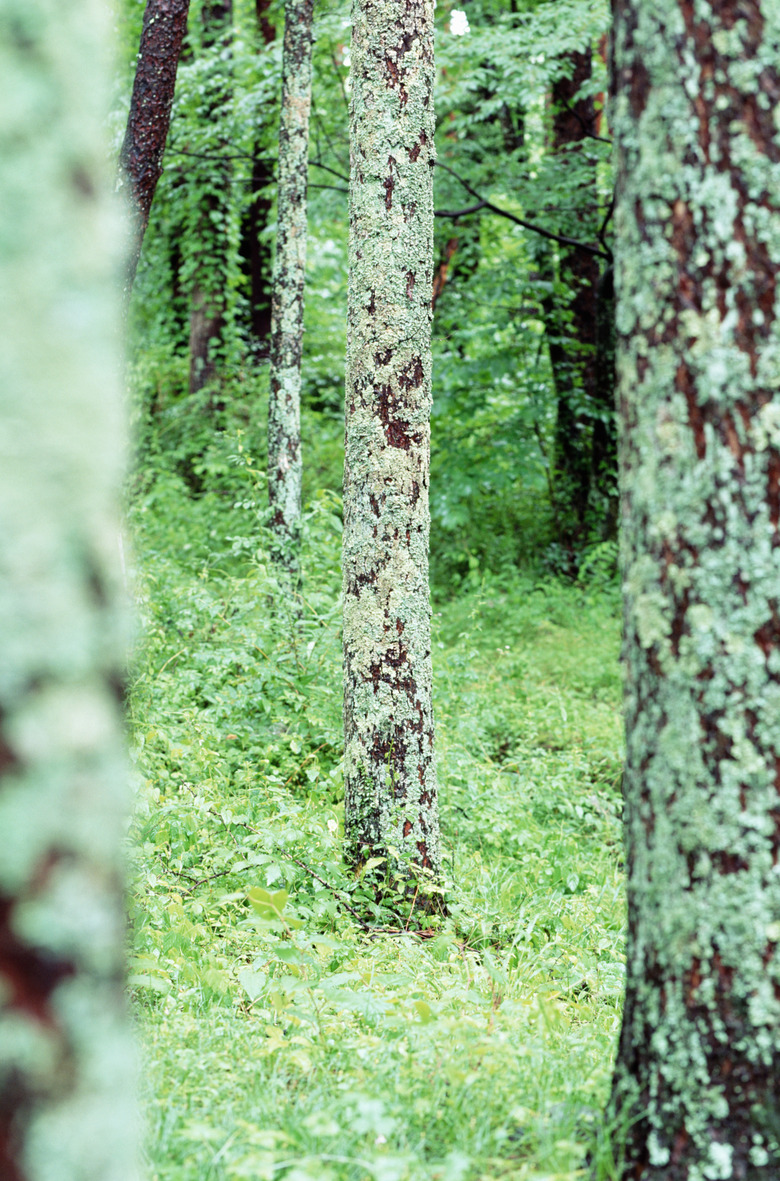What Two Roles Do Lichens Play In An Ecosystem?
Rich green or brightly colored, fine tendrils or flattened blotches, tiny patches or lengthy and expansive growth – lichens come in a mind-blowing assortment of shapes, sizes and colors. They add impressive and often beautiful diversity to forests, alpine ridges and the numerous other ecosystems they inhabit. These organisms have an incredibly unique composition and play several important roles in the habitats that they occupy.
What Is a Lichen?
What Is a Lichen?
Is lichen a fungus? Is it moss? Algae? Magic? Some species certainly look magical, but lichens are actually simply symbiotic organisms! Researchers define lichens as a fungus and an alga (that's the singular of "algae") working together to survive. Some lichens also contain cyanobacteria in place of, or alongside, algae.
But doesn't algae usually grow in the water? That's the beauty of symbiotic organisms. The alga produces the food through photosynthesis, and the fungus protects the alga and provides nutrients and water for their combined survival. This unique combination allows lichens to survive where many other organisms cannot.
The Three Types of Lichens
The Three Types of Lichens
Scientists recognize three different types of lichens: foliose lichens, fruticose lichens and crustose lichens. Foliose lichens have a plant-like appearance and an easily distinguishable top and bottom to their structure. Fruticose lichens typically have branches or stalks as their structure. They can appear long and wispy, shrub-like, or cup-shaped. Crustose lichens look, well, crusty. You can often find this form of lichen on rocks. They create an often-colorful crust over the surface they grow on.
Lichen's Role as a Food Source
Lichen's Role as a Food Source
A wide variety of different creatures feed on lichens, and in regions where plant life is scarce, lichens can provide one of the few forms of sustenance around. For example, reindeer lichen gets its name from the reindeer that rely on it as their primary food source during the winter months. Other creatures that feed on lichens include pronghorn, deer, bighorn sheep, elk, rodents, moose, mountain goats and insects.
Even creatures who do not directly eat lichens benefit from their existence as a food source. For example, animals who feed on the various insects and mammals that eat the lichen, such as stoats, owls and hawks, benefit from lichens indirectly. Even more creatures utilize lichens as nesting material and shelter, making the reach of these unique symbiotic organisms quite widespread.
Lichen's Role in Nitrogen Fixation
Lichen's Role in Nitrogen Fixation
Lichens use the air around them to absorb nutrients and minerals. In doing so, these unique organisms make these nutrients available to other creatures as well. Lichens that contain cyanobacteria can take otherwise inaccessible nitrogen from the atmosphere and "fix" it so that it becomes usable to the lichen, and thus, other creatures that feed on the lichen.
Lichen's Role as an Environmental Indicator
Lichen's Role as an Environmental Indicator
Because these unique creatures utilize the air around them to acquire nutrients, researchers use them as indicators for various pollutants and heavy metals. If pollutants exist in the air around the lichen, they absorb those pollutants, and scientists can use samples of the lichen to test the area for contamination.
Lichen growth – and death – can also help scientists determine how healthy an ecosystem is as a whole. Though they can live in otherwise inhospitable regions, many lichens do not tolerate high levels of pollutants in the air. When lichens begin dying in an area, researchers can assume that pollution levels in that region are increasing and investigate further. Conversely, areas diverse with lichens help indicate healthy and thriving ecosystems.
Habitats and ecosystems with healthy lichen populations can support a range of various creatures. Lichens provide nutrients to the insects and herbivores, fix nitrogen to resupply it into a usable form for the animals in the ecosystem and also indirectly support the predators who prey upon those creatures as well.
Cite This Article
MLA
Zinni, Yasmin. "What Two Roles Do Lichens Play In An Ecosystem?" sciencing.com, https://www.sciencing.com/two-roles-lichens-play-ecosystem-8789/. 30 September 2021.
APA
Zinni, Yasmin. (2021, September 30). What Two Roles Do Lichens Play In An Ecosystem?. sciencing.com. Retrieved from https://www.sciencing.com/two-roles-lichens-play-ecosystem-8789/
Chicago
Zinni, Yasmin. What Two Roles Do Lichens Play In An Ecosystem? last modified March 24, 2022. https://www.sciencing.com/two-roles-lichens-play-ecosystem-8789/
